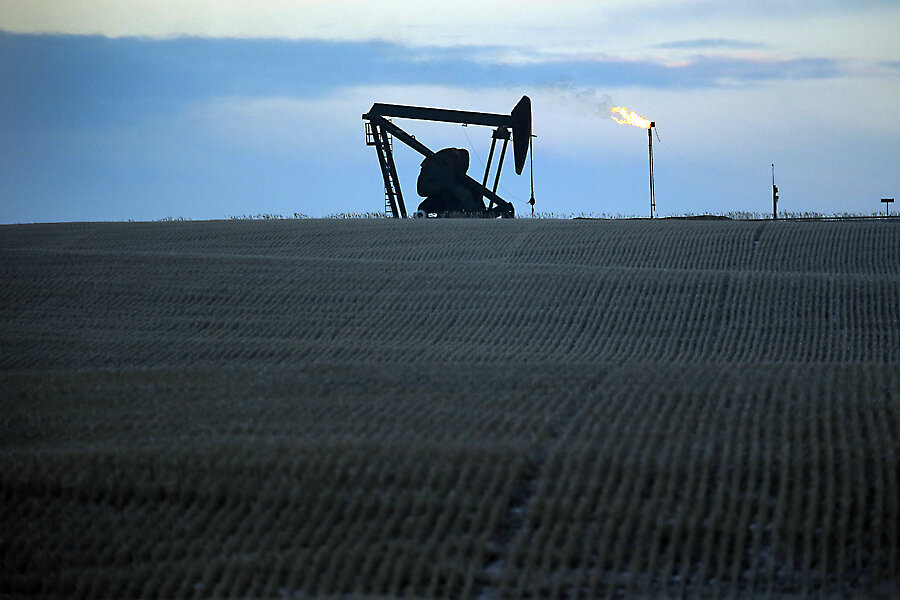How much oil does the US have? It depends on who's counting.
Loading...
Recent developments are beginning to undermine the supremacy of the world's long-running energy information duopoly and its perennially optimistic narrative. Policymakers, investors and the public should take heed.
Until now most energy price and supply forecasts and analyses were based predominately on information from the globe's two leading energy information agencies: the U.S. Energy Information Administration (EIA), the statistical arm of the U.S. Department of Energy, and the International Energy Agency (IEA), a consortium of 29 countries originally formed in response to the 1973-74 Arab oil embargo to provide better information on world energy supplies to its members.
Both agencies provide forecasts that are publicly available and widely covered in the media. What's not apparent is how dependent private forecasts issued by the energy industry and financial firms are on the work done by these agencies.
These agencies are able to bring to bear substantial financial resources and large dedicated staffs of statisticians, economists and other specialists focused solely on gathering and analyzing energy data across the world. Few organizations--except perhaps the major international oil companies--are able to muster such resources to monitor world energy. And, the major international oil companies make little of their analysis public. For policymakers and the public, the EIA and IEA have been the go-to sources for presumed-to-be objective energy information.
What's changed is the willingness of private donors to fund independent energy supply research on a scale not previously undertaken outside of government and industry control. The implication is that the world needs more diversity than the two current institutional opinions and the cryptic, self-serving pronouncements of the industry.
Two recent studies illustrate the point. And, they're not good news for the oil and gas industry. First, there is the study by the Bureau of Economic Geology (BEG) at the University of Texas at Austin. On the surface the bureau may seem too embedded in the heart of oil country. But, the money for its recent study on the future of U.S. shale natural gas came from the Alfred P. Sloan Foundation and NOT from the industry. The whole purpose has been to provide an independent, unbiased assessment of the future of shale natural gas in the United States.
The conclusions of that research--which I mentioned in a previous piece--are far more pessimistic about the future of U.S. shale gas than either the EIA or the industry. Those conclusions became an embarrassment for the EIA when the difference came to light in a recent article in the science journal Nature.
The second example is a study entitled "Drilling Deeper: A Reality Check on U.S. Government Forecasts for a Lasting Tight Oil & Shale Gas Boom" published by the Post Carbon Institute. (Full disclosure: I worked as a paid consultant to publicize this report. But, the fact that the funders provided money specifically for this purpose means they are serious not only about the research, but also about getting this alternative view out to the public and policymakers.)
"Drilling Deeper" aligns quite well with the findings of the BEG on U.S. shale natural gas. But, it goes beyond gas to analyze the future of U.S. tight oil derived from deep shale deposits. In doing so "Drilling Deeper" not only utilizes EIA data, but also data from one of the leading data providers to the oil and gas industry, Drillinginfo. That information costs money, and funders are now willing to provide that money.
All of this has put the EIA on the defensive. The Paris-based IEA, however, has not been directly challenged yet since the two studies mentioned above focus on U.S. oil and natural gas. Still, the growth in worldwide oil production since 2005 has been due almost completely to rising production in two countries: the United States and Canada--and that has huge implications for any forecast done by either agency, especially if the assumptions about future oil and gas production growth in those countries are overblown.
Both the EIA and the IEA have generally released similar worldwide forecasts for energy in the past. The IEA has in recent years, however, taken a more activist tack since its charter allows it to talk about climate change as a danger. And, the agency has warned about the lack of investment in energy of all kinds because of the recent drop in oil prices.
The IEA was the first to declare that conventional oil--that is, easy-to-get, low-sulfur, liquid crude--peaked in 2006. The world is now increasingly living on expensive, hard-to-get unconventional oil under deep ocean waters, in the Arctic and from deposits that aren't even liquid such as the Canadian tar sands. The IEA still claims, however, that given the proper investment, these unconventional sources can meet rising oil demand for at least another two decades.
The ever so slowly growing divergence between the EIA and IEA and the advent of well-funded independent original research suggest that the days of looking solely to the two governmental energy entities for energy information are over. Both failed to predict constraints on oil production in the last decade and a half, and both now continue--despite their seeming differences--to assume a business-as-usual future when it comes to energy, if not climate change. This is despite the growing evidence and chorus of experts calling such complacency into question.
Now, those experts are beginning to garner enough financial resources to create in-depth independent, data-driven analyses and disseminate them to a broad audience--one that no longer has to take either the EIA or the IEA at its word.







